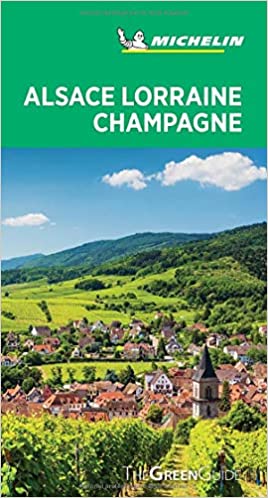Let’s start planning a road trip...
..through the lush vineyards and timber-framed French villages of AlsaceGary and I have visited the Alsace region of France many times now, and it never fails to leave an adoring impression on us. Waves of vineyards rippling over the Alsatian countryside unfolding like a patchwork quilt and Flammekueche wafting from local restaurants. What more could you want?
The beautiful Alsace region in France runs parallel with its neighbour Germany. With the historical fusion of the two countries over the centuries, you gain the best of both worlds from their cultures.
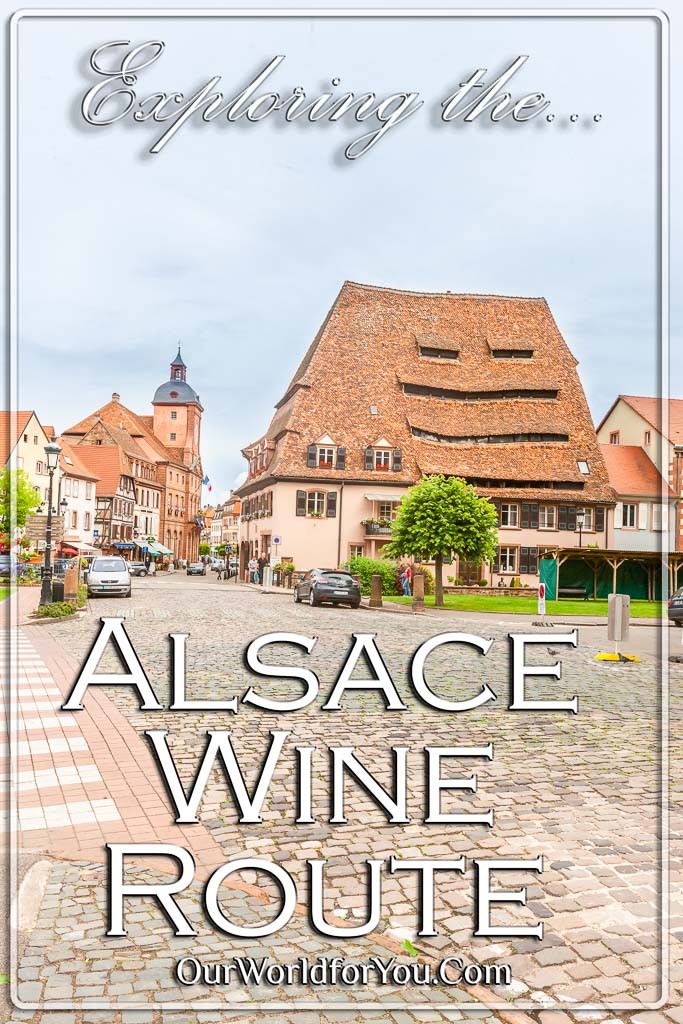
Getting to Alsace in France
Our French adventure through the Alsatian countrysideAs we love our road trips, we pack up the car, head to the Kent coast and hop on Le Shuttle. Thirty-five minutes later, we are in the land of fromage, macarons and Champagne.
Leaving Calais head southeast on the Autoroute toll roads, it is around 387 miles (622km) direct to Colmar. Or, if you’re like us and want to break the journey up, you can stay overnight in the beautiful cities of Reims, Nancy, or Metz.
The vibrant town of Colmar
An Alsatian gem in the Grand EstOur Route des Vins d'Alsace journey begins in the picturesque town of Colmar, near the south of the Alsace wine route. Colmar is a perfect location to base yourself for a few days while exploring the Alsace towns and villages further south of Guebwiller, Cernay and Thann.
Colmar is a stunning town; the beautifully kept timber-framed homes are awash with striking tones. Waterways are weaving through the streets, and window boxes and floral displays overflowing with fragrant blooms.
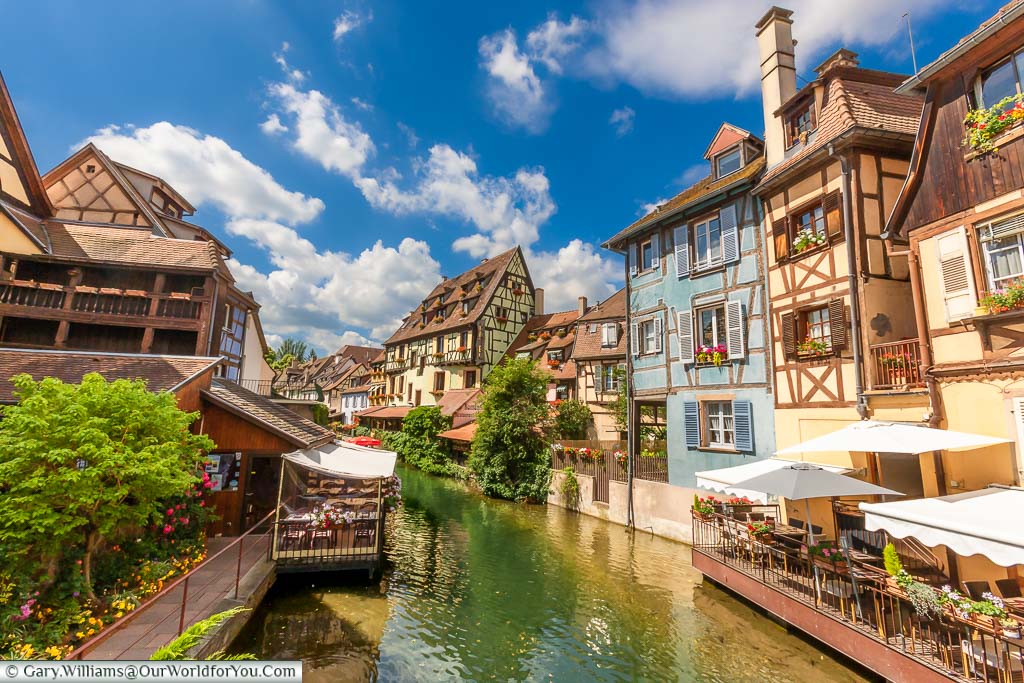
Colmar’s Old Town was relatively unscathed during the two World Wars, mainly due to Germany’s occupation. Today this means that when you stroll the cobbled streets and winding lanes, you feel like you’ve stepped into another era.
The medieval architecture throughout Colmar is incredible; examples of Baroque, Renaissance and Gothic buildings are around every corner. Along with so many historic places of worship still intact.
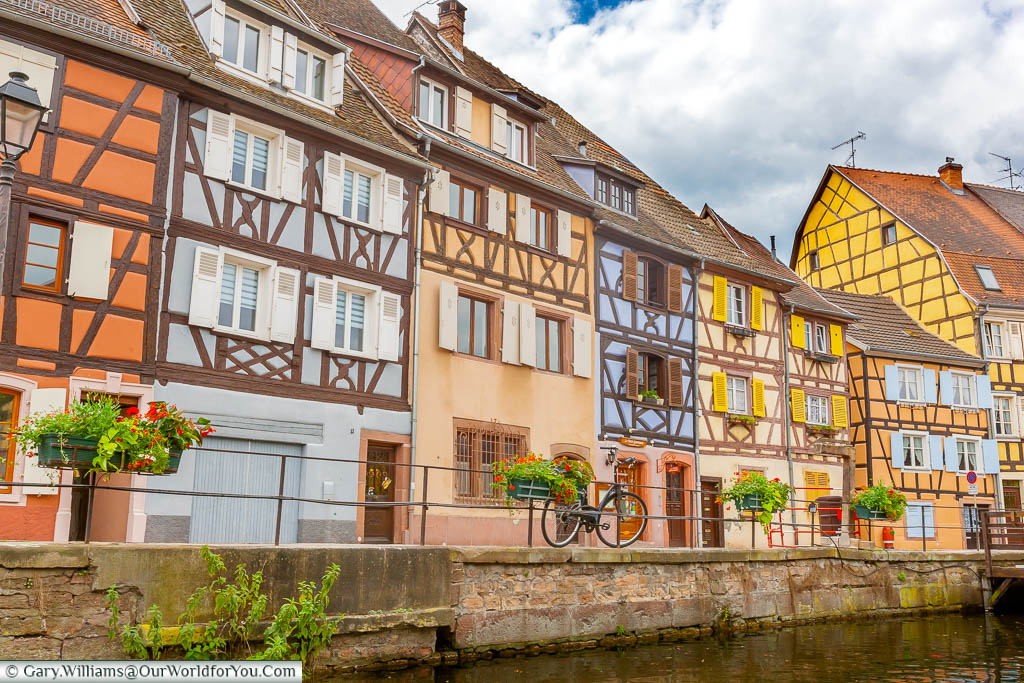
I loved the canals flowing through Colmar, and I needed no encouragement to hop on a boat tour and explore the waterways. Yes, Colmar’s “la Petite Venise” is another of the world’s “Little Venice”.
If you’re lucky, you may even be able to secure a riverside table at one of the bustling restaurants that line the canals. Oh, and don’t forget to order the delicious flammekueche, the traditional dish of the Alsace region.
Where we stayed in Colmar
Our accommodation for the few nights in Colmar was at the Le Colombier. This stylish hotel was perfectly located in the Little Venice district of Colmar. Just a couple of minutes walk into the historical old town.
Chargeable onsite parking is available at the hotel. However, there are parking options on the street in front of the hotel
If like us, you love visiting different regions of France then this Michelin guide will definitely assist in your planning.
We used a previous version of this book to plan our eastern France road trips, now you can grab the revised copy.
The wine village of Niedermorschwihr
Along the Alsace wine route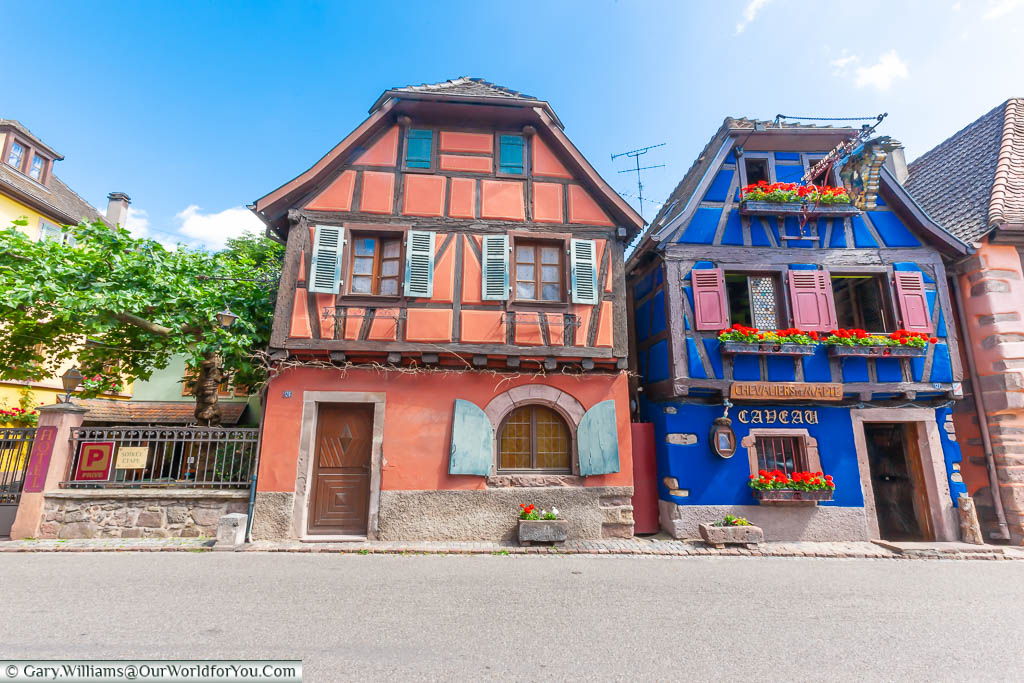
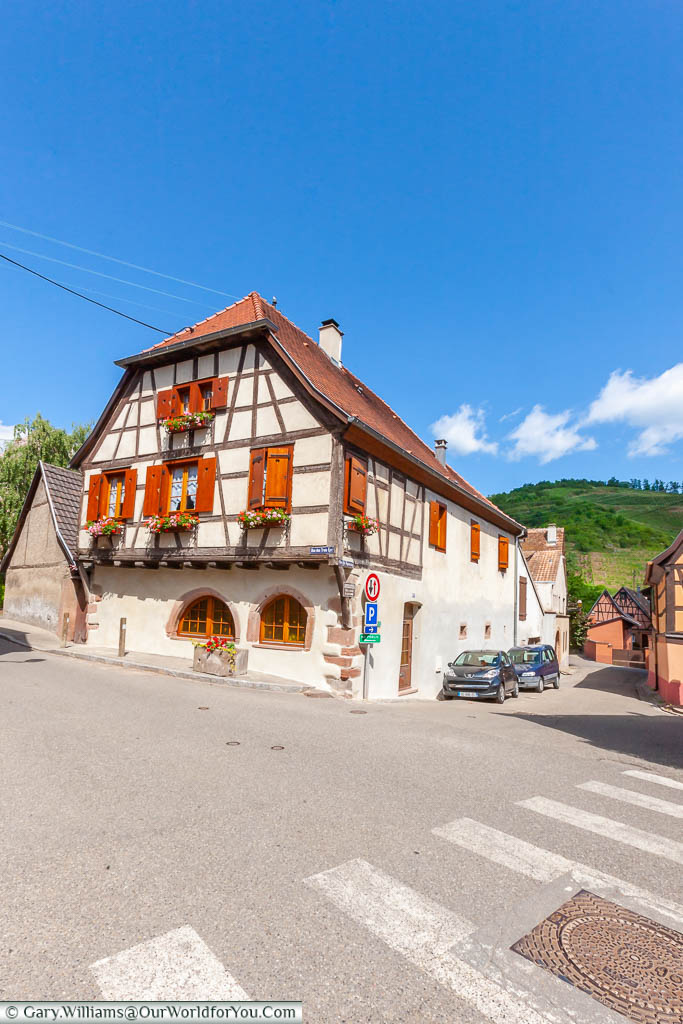
The eye-catching homes and historic buildings that house the welcoming restaurants and cafés date from the 18th-century. Niedermorschwihr suffered heavily during the Thirty Years War and then again through the Second World War, devastating the picturesque village.
One of the unique aspects of Niedermorschwihr is the twisted steeple on the bell tower of Saint Gall Church.
Exploring the Alsace town of Kaysersberg
Overflowing with medieval Alsatian charmKaysersberg is captivating as soon as you step onto the cobbled streets. Surrounding the small, picturesque town are rows and rows of vineyards bearing the fruit for the coming years harvest.
Kaysersberg is like a magnet, it draws you in, and you just want to explore the gems hidden around the next corner.
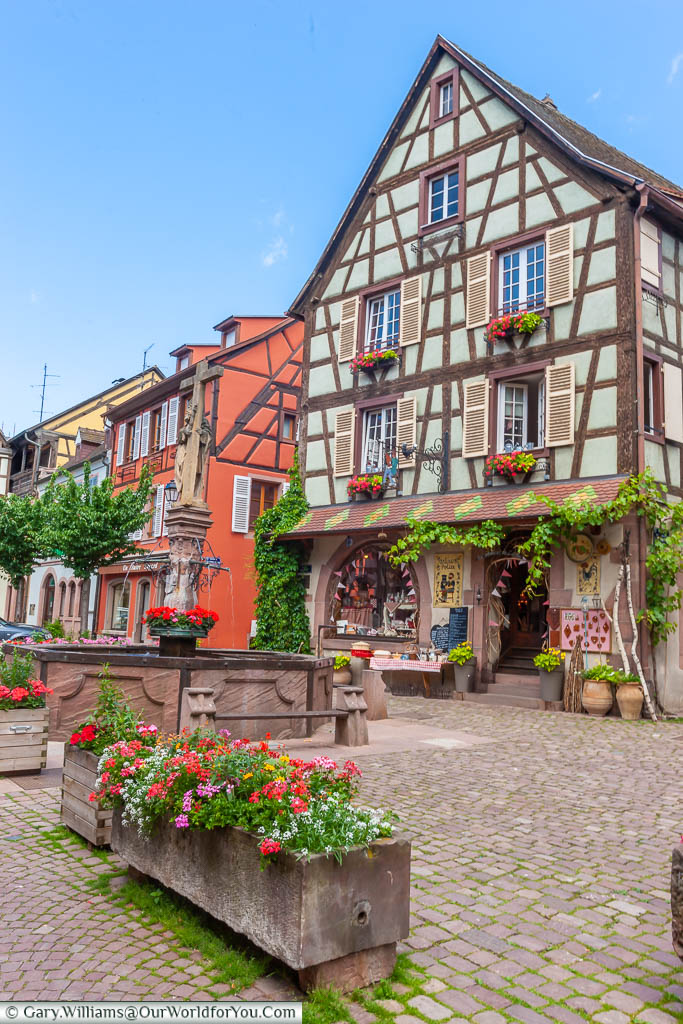
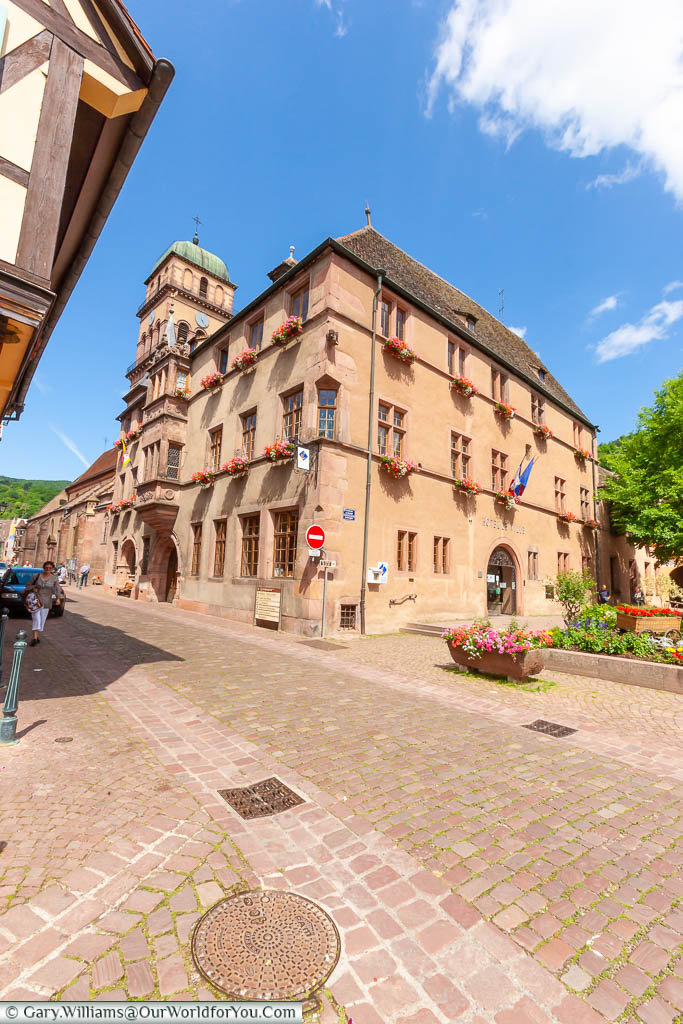
Once again, the architecture in these Alsace towns and villages is stunning. The half-timbered townhouses that line the welcoming lanes of Kaysersberg are full of vibrant colour, with flowers unfurling themselves from balconies and window-boxes.
Strolling along the Rue du Général de Gaulle just makes you smile at how pretty it is. French flags are fluttering high above, and welcoming cafés and bistros are tiptoeing out onto the pathways.
Heading further and further through the town, you’ll spot many historical monuments and ancient buildings dating from the 15th and 16th centuries. The dusty pink stone building of the Hotel de Ville with its beautiful protruding stone balcony is particularly eye-catching.
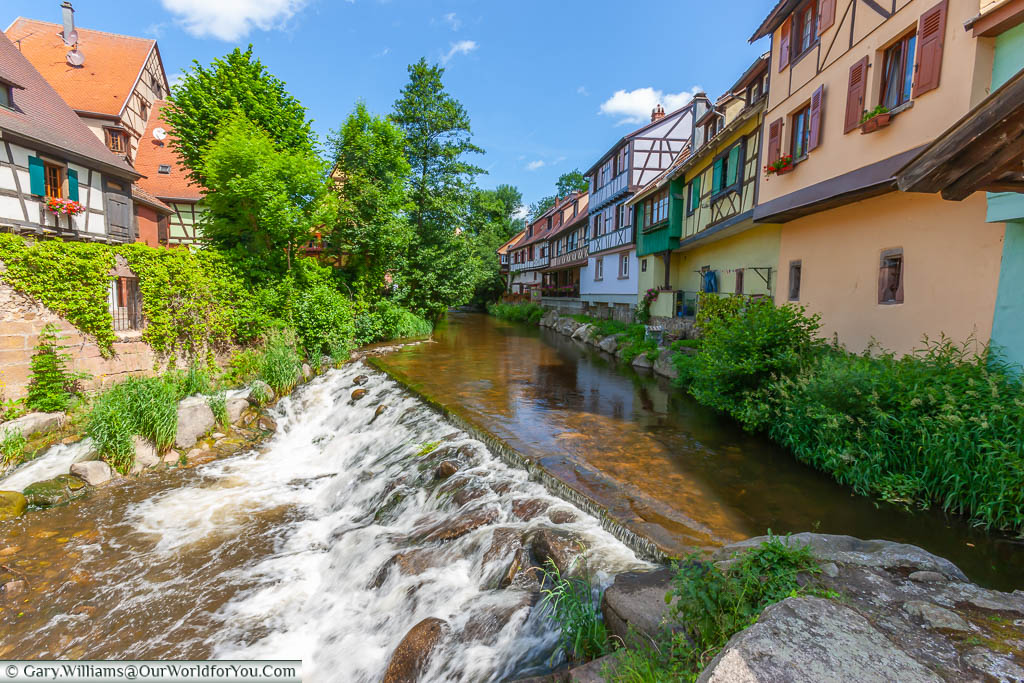
Ambling along the entire length of Kaysersberg cobblestoned streets is a treat. However, when you reach the Pont Fortifié, you get the magnificent view of the River Weiss tumbling over rocks and weirs and the verdant Vosges Mountains beyond.
A tour of the Alsace wine route wouldn’t be complete without a stop at the captivating town of Kaysersberg.
In our opinion
Riquewihr on the Route des Vins d'Alsace
A 16th-century medieval village oozing with charm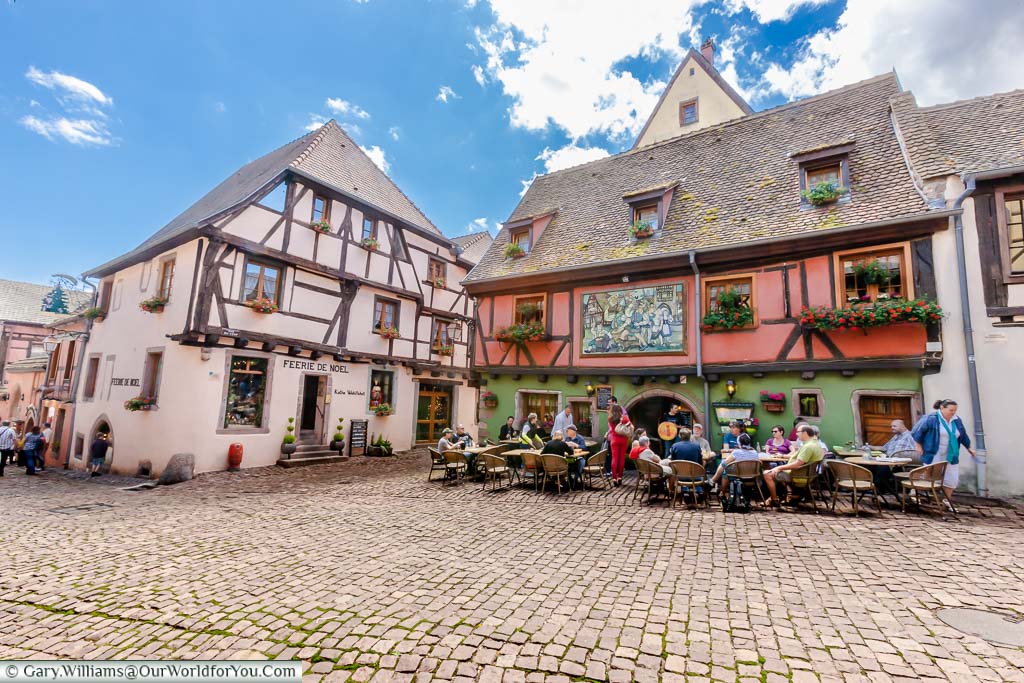
Visiting Riquewihr is like stepping into the pages of a fairytale novel; the exquisitely preserved architecture appears unchanged since the 16th-century. It was one of the lucky locations to have escaped the ravages of World War II.
Riquewihr’s cobbled streets are so alluring as you wander through the village's main route; one timbered-framed townhouse after another is worthy of your admiration. Ornate wrought-iron shops signs have been lovingly installed to keep the whole aesthetics and character of the place.
In Riquewihr, you’ll also discover fortified walls and ancient towers guarding the village. In particular, the Dolder Tower and the Tower of Thieves (don’t ask, it never ended well).
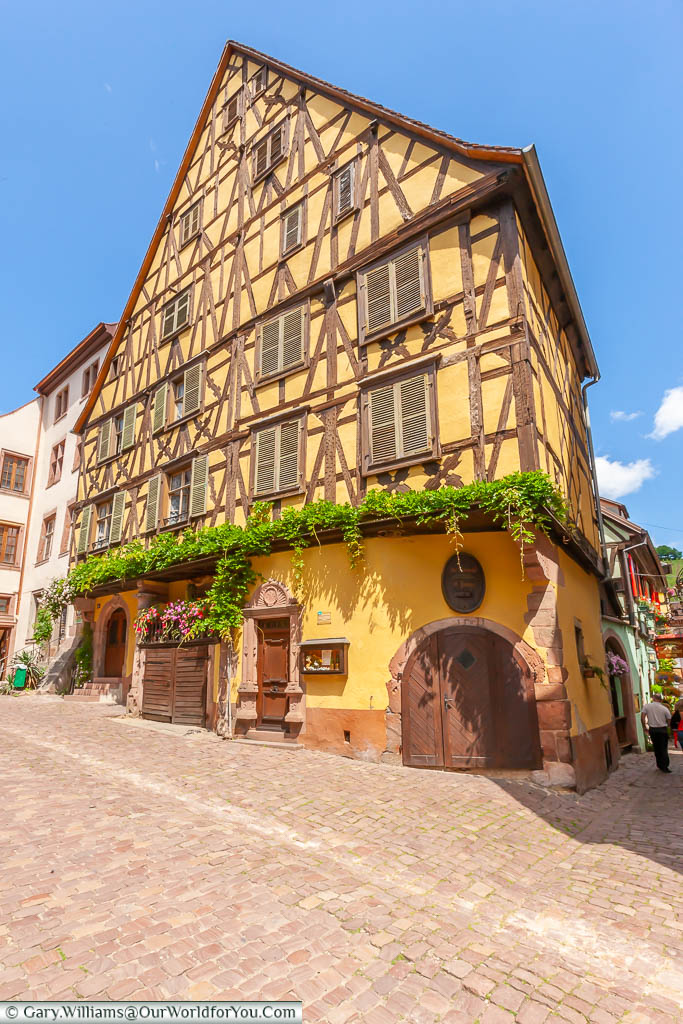
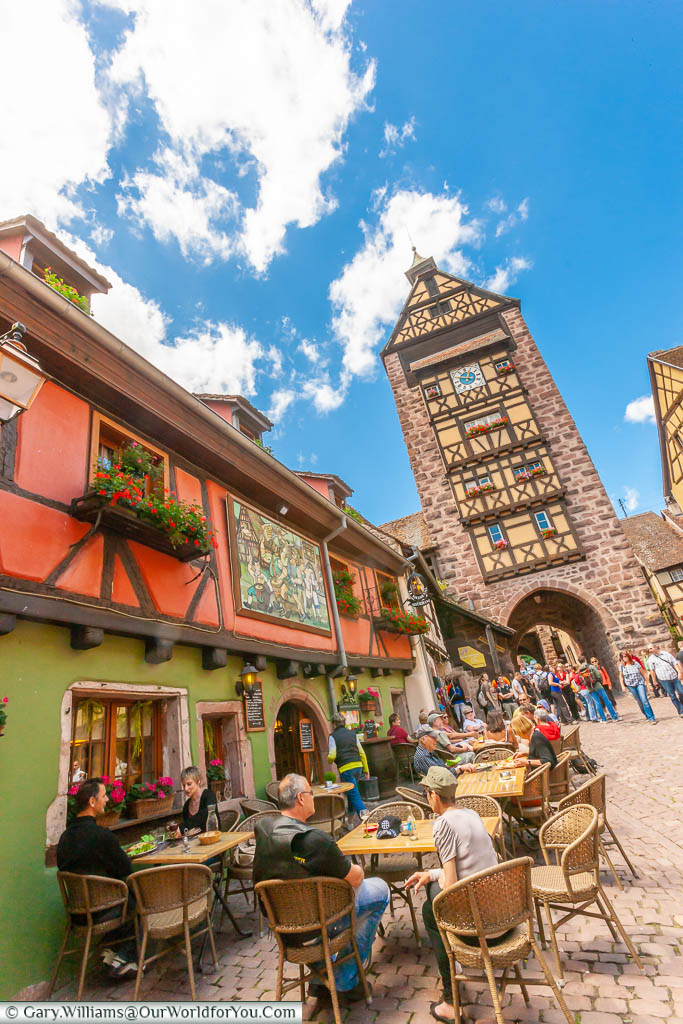
Dotted all around the cobbled lanes of Riquewihr are attractive courtyards, old stone fountains overflowing with not only water but an abundance of blossom.
While visiting Riquewihr, I’m sure you’ll be tempted by the incredible wines of the Alsace region. Why don’t you leave your car back at the hotel in Colmar and jump on this intimate full-day tour? Visit four medieval Alsatian villages and enjoy the wine tasting at your leisure.
Why not?
Start creating your own French adventure and discover the enchanting French countryside for yourself. Search for your flights in one easy place with ebookers.com. Over 400 airlines are scanned for your favoured routes and chosen dates.
Or alternatively, catch a Brittany Ferry and tour through France under your own steam.
Obernai, a fortified town in Alsace
Perfect overnight stay on the Route des Vins d'AlsaceJourneying further north on the Alsace Wine Route, we have an overnight stay at Obernai; this gives us the opportunity to dig a little deeper into the colourful fortified town.
Obernai still has large sections of its original ramparts and towers dotted around the town. It once had a double wall of fortifications and was encircled by 20 towers and four gates.
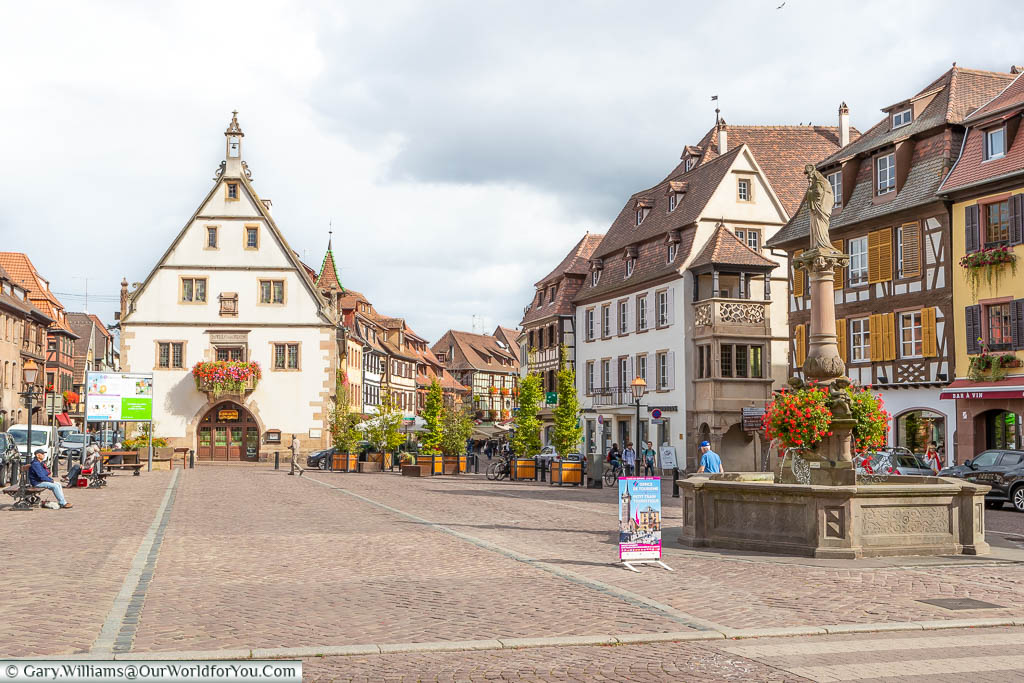
The beating heart of Obernai is in the picturesque Old Town at the Place du Marché. This beautiful square is surrounded by some incredible examples of half-timbered buildings and charming historic architecture so synonymous with Alsace.
At one end of Place du Marché is the Corn Exchange, built in 1554 and was originally a butcher’s shop; it’s now a friendly restaurant. We can highly recommend their tarte flambée. Then at the opposite end of Obernai’s market square is the Neo-Renaissance style Hôtel de Ville, which was once the court of justice.
Obernai is perfect for a stopover on your Alsace wine route road trip. The exquisite 15th and 16th-century architecture that still stands proud today in this delightful town is magnificent.
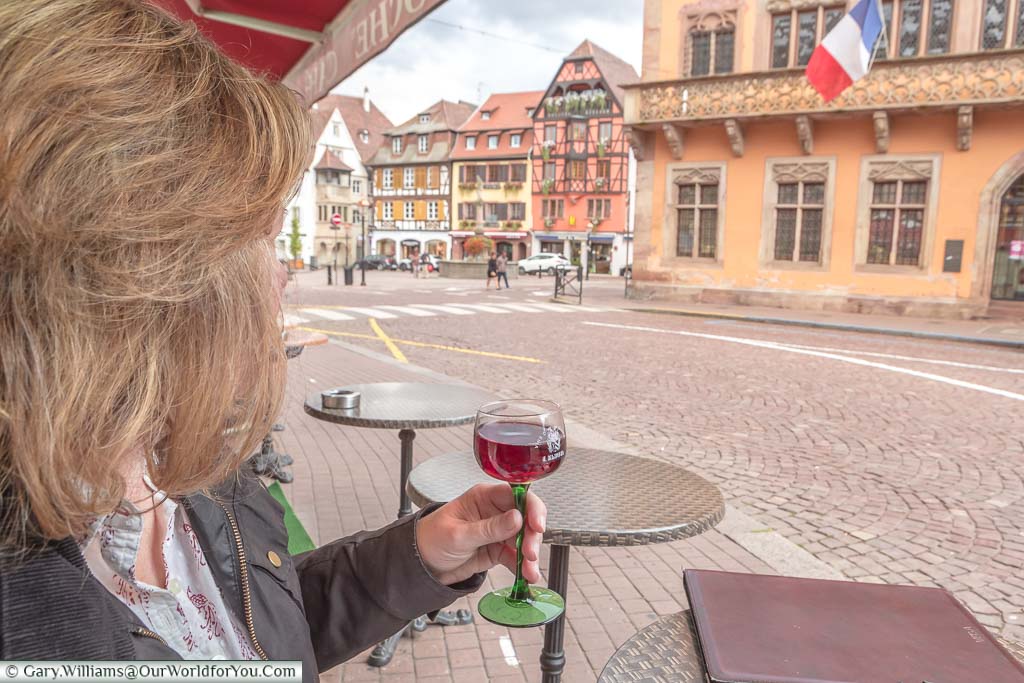
Where we stayed in Obernai
Our accommodation for the one night in Obernai was at the Chambres d'hôtes - L'Ecurie Obernai. It was a family-run B&B, the room we had was lovely and very modern, over two floors.
Although it was on one of the main roads leading into Obernai Old Town, it was very peaceful and just by the ramparts, so very central.
Molsheim, a little off the tourist path
Discover La Metzig and all things BugattiThere are so many charming towns and villages along the Alsace wine route it’s difficult at times to narrow them down. During our last visit to Alsace, we stayed overnight in Molsheim.
Molsheim is located in the north region of the Route des Vins d'Alsace, and one of the larger towns along the route. It has a wonderful town square, and like many places in France, large or small, it has an adoring carousel.
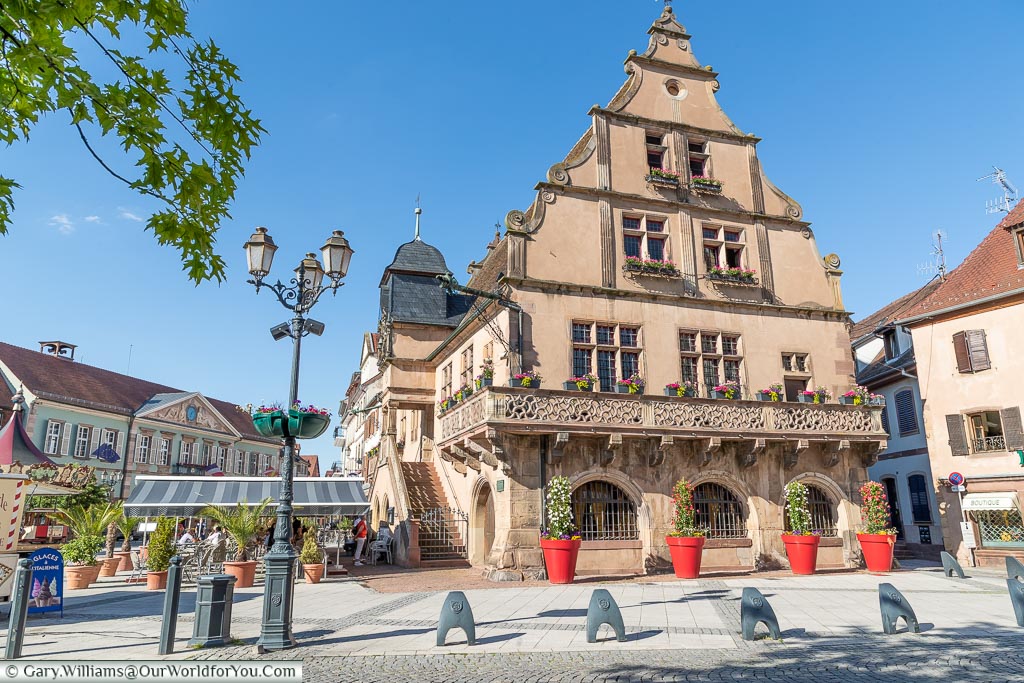
One of the aspects I loved about Molsheim was that there appeared to be fewer tourists and felt like it still had the local community at its heart.
The attractive Place de L’ Hôtel de Ville is full of character, colour and surrounded by stunning historic architecture. The building that your immediately drawn to is the 16th-century Renaissance ‘La Metzig’. La Metzig was constructed in 1525 and is adorned with ornate gables and a double-fronted staircase.
Molsheim is reasonably compact and very pleasurable to stroll around, with beautiful half-timbered Alsatian townhouses and delightful, peaceful lanes to discover. The medieval Porte des Forgerons (Blacksmiths Tower) once formed part of Molsheim’s city walls.
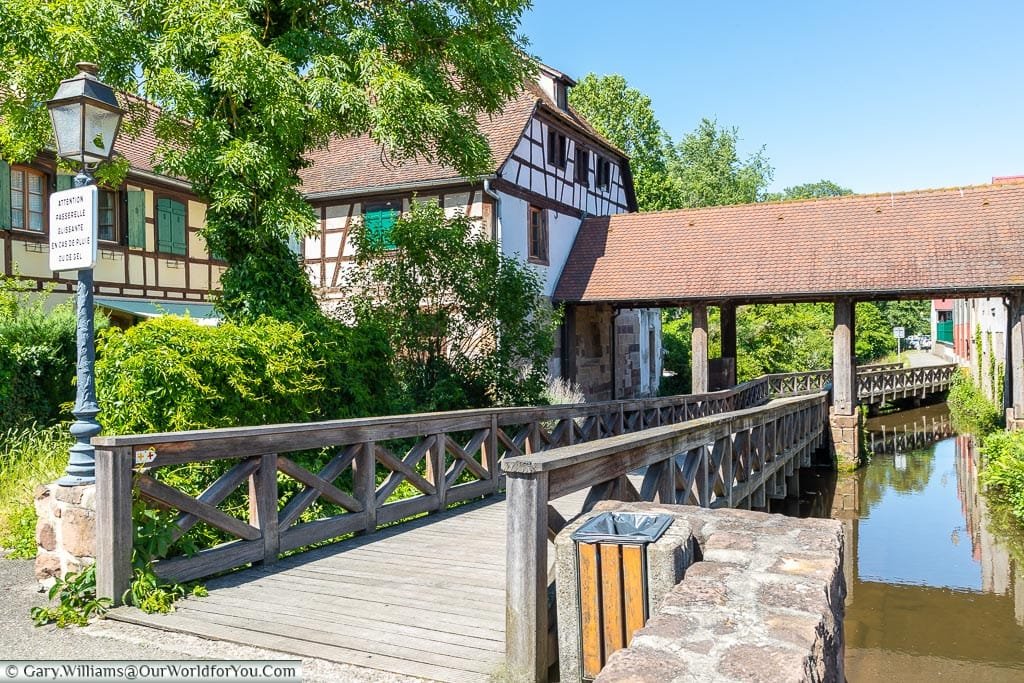
Adjacent to the Bugatti Museum is the former La Chartreuse monastery. This was such a delightful place to visit. The monastery has undergone lots of TLC, as it was largely destroyed during the French Revolution. Discover the tranquil courtyards and gardens and enjoy the enchanting aromas as you brush past the overflowing herbs.
So, if you’re planning an Alsace road trip, ensure to include Molsheim en-route.
Where we stayed in Molsheim
Our accommodation for the one night in Molsheim was at the Hôtel Diana Restaurant & Spa by HappyCulture.
The hotel was in a peaceful location and only around an eight-to-ten-minute walk into the heart of Molsheim, which made it ideal for exploring the historic old town. There was plenty of free parking on site.
Wissembourg, a relaxing place to start your road trip
The northern-most town on the Alsace Wine RouteSome say Wissembourg is on the Alsace Wine Route and others say it isn’t. Nonetheless, I’m going to include it anyway, so you have even more choice and flexibility as to where you start and finish.
Wissembourg is at the far northern end of the Route des Vins d'Alsace; it’s so close to the German border that you can almost smell the bratwurst aromas wafting through the air.
The small, picturesque town of Wissembourg was a delight to visit and made even better that there were very few tourists.
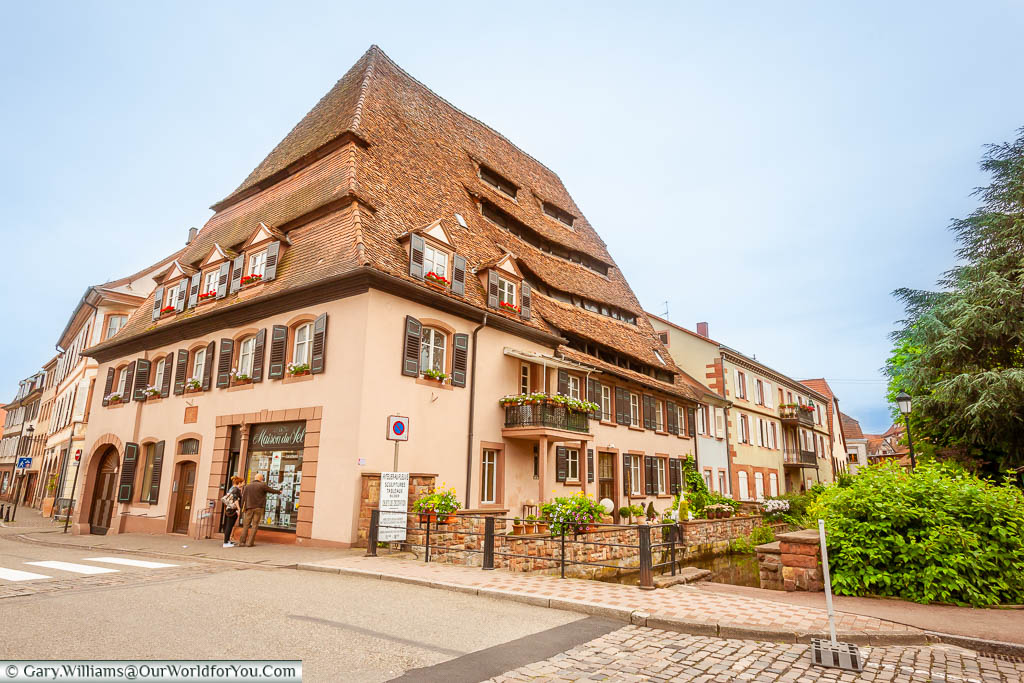
In the heart of the Old Town, you’ll discover the 15th-century Maison du Sel with its extraordinary, pitched roof; Maison du Sel was the first hospital in town. Nearby is the former abbey church of St. Peter and St Paul; explore the inside and have a wander around its unfinished cloister.
Wissembourg is awash with colour, especially alongside the River Lauter. The waterway runs through the centre of the scenic town and provides a delightful riverside walk. Passing through parks and gardens and even beside the remains of the ancient city walls, towers and fortifications.
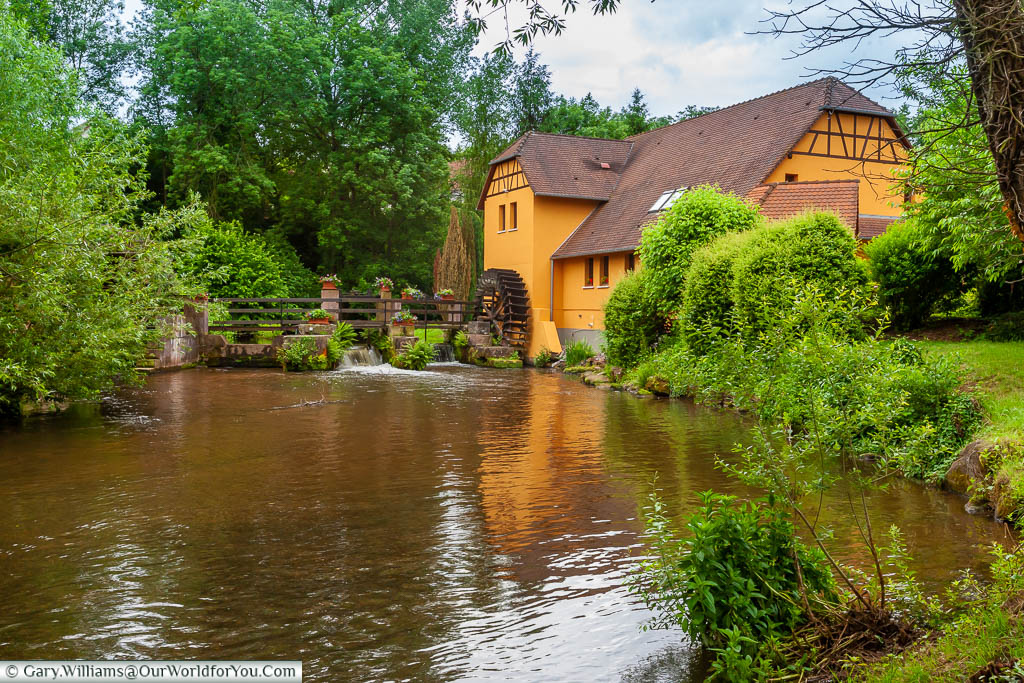
Stroll by the canal along the Quai du 24 Novembre criss-crossing the tiny bridges and onto the Faubourg de Bitche. All the while admiring so many of the beautifully kept and pretty half-timbered homes. Keep heading further along, and you’ll spot Wissembourg’s charming watermill.
Wissembourg is a delightful place to start or end your Alsace Wine Route tour, as it felt very relaxed, welcoming and quite peaceful.
Where we stayed in Wissembourg
Our accommodation for the one night in Wissembourg was at the La Couronne à Wissembourg.
The hotel is in the heart of the Old Town. Within a short stroll of all the sights and the pleasant riverside walk. The hotel doesn’t have parking, although we found it reasonably easy to find a parking space in the street.
More to discover in Alsace
Strasbourg, a perfect mix of cultures
Discover Grande Île and Petite FranceOk, so strictly speaking, Strasbourg is not on the Route des Vins d'Alsace; however, I couldn’t complete a post on Alsace and not mention the stunning city of Strasbourg.
We’ve visited Strasbourg twice and, on both occasions, it was Christmas time. The markets were in full swing, and the stunning city illuminations were glistening around every corner.
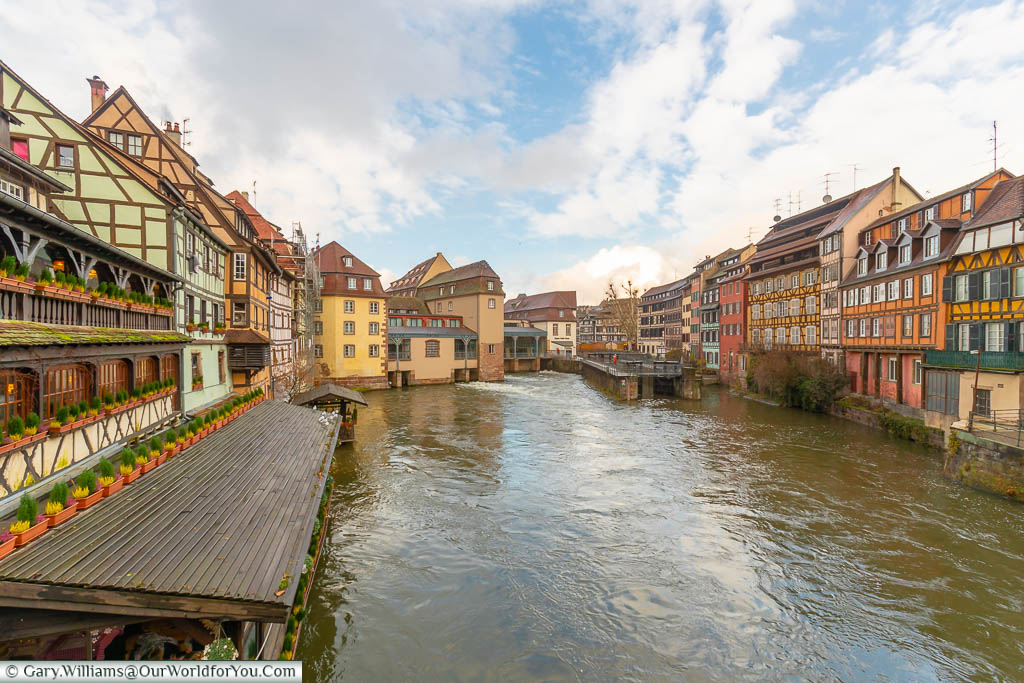
Strasbourg is perfect for a city break. You’ll be struck by how incredibly captivating the city is, with its charming squares and canal-side walks.
Strasbourg’s historic city centre, the Grande Île and Petite France are magnificent to stroll around. There are so many stunning examples of Alsatian architecture. The city has been embroiled in many disputes with Germany over the centuries. Today the Franco-German culture and influences enhance the city immensely.
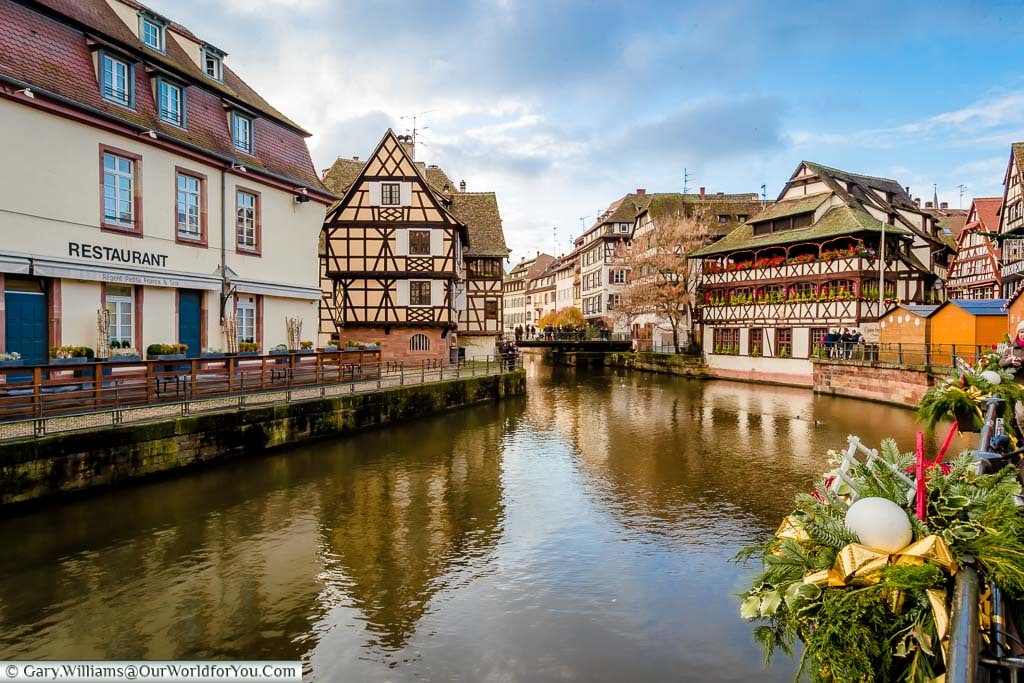
Once you’ve discovered the delights of Petite France, its surrounding waterways and cobbled streets, a visit to Strasbourg Cathedral is a must. The towering cathedral is stunning, and for a period of 227 years, between 1647 and 1874, it was the tallest building in the world at 466 feet (142 metres). Take a peek inside the cathedral and discover the Astronomical clock, standing 59 feet (18 metres) high.
The historic centre of Strasbourg was added to the UNESCO World Heritage list in 1988.
Where we stayed in Strasbourg
Our accommodation, while we were in Strasbourg was at the Mercure Strasbourg Centre.
The hotel was very centrally located, and onsite parking was available at a charge.
* This post may contain links to affiliated sites where we earn a small commission at no additional charge to you.
